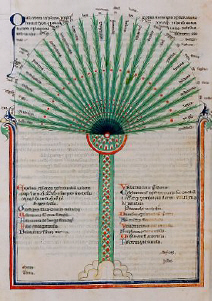Aphrodite was universally recognized as the Lady of Cyprus, the cosmopolitan island where Greek colonists and mariners were exposed at an early date to the cultures of the Near East. Because of the many similarities between Aphrodite and Semitic Ishtar/Astarte, and the lack of clear evidence for a Mycenaean Aphrodite, many scholars view the goddess of sexual desire as a relatively late addition to the Greek pantheon, borrowed from the Phoenicians. A persistent minority, however, argue that her roots were Indo- European, and that she was a cousin to Ushas, the Vedic dawn goddess, brought to Cyprus by the Mycenaeans. A third view holds that her ancestor was a Bronze Age Cypriot goddess who incorporated both indigenous and Phoenician elements by the time the Greeks adopted her.
In poetry as in cult, she was associated with blooming gardens and all the paraphernalia of female beauty: perfumed textiles, jewels, and mirrors. Incense, dove sacrifices, and myrtle crowns were distinctive features of her worship. Aphrodite was typically honored at several smaller shrines in a given city rather than one major sanctuary, which indicates an important popular element in the development of her cult. Her sanctuaries often included a cult statue, which required housing, but only rarely were grandiose temples built for her. Similarly, few state festivals in her honor are attested except in the case of Aphrodite Pandemos, though private activities such as vows and banquets were common, particularly in connection with the securing of husbands or sea journeys safely completed. Though a mother, she is not a “mother goddess.” Above all, as in myth and poetry, she rules sexual unions of every variety, and is therefore incidentally associated with marriage and the conception of children. (KINGSLEY, Peter. Reality. Inverness: The Golden Sufi Center, 2003, p. 214)
